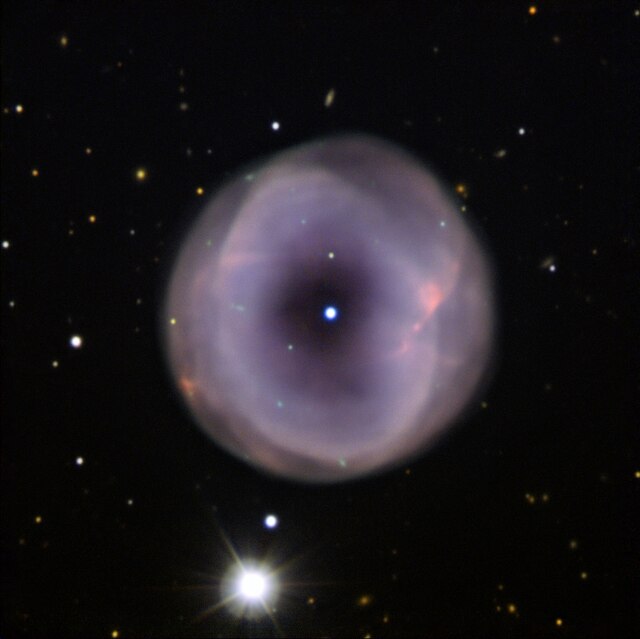NGC 7552 is a barred spiral galaxy in the constellation Grus. It is at a distance of roughly 60 million light years from Earth, which, given its apparent dimensions, means that NGC 7552 is about 75,000 light years across. It forms with three other spiral galaxies the Grus Quartet.
Image of NGC 7552 taken by the GALEX ultraviolet telescope.
The starburst ring in mid-infrared by the T-ReCS of Gemini Observatory.
Grus is a constellation in the southern sky. Its name is Latin for the crane, a type of bird. It is one of twelve constellations conceived by Petrus Plancius from the observations of Pieter Dirkszoon Keyser and Frederick de Houtman. Grus first appeared on a 35-centimetre-diameter (14-inch) celestial globe published in 1598 in Amsterdam by Plancius and Jodocus Hondius and was depicted in Johann Bayer's star atlas Uranometria of 1603. French explorer and astronomer Nicolas-Louis de Lacaille gave Bayer designations to its stars in 1756, some of which had been previously considered part of the neighbouring constellation Piscis Austrinus. The constellations Grus, Pavo, Phoenix and Tucana are collectively known as the "Southern Birds".
The constellations Grus and Piscis Austrinus, which once formed a single constellation, as depicted in Atlas Coelestis by Johann Doppelmayr, ca. 1742
The "southern birds", as depicted in Johann Bayer's Uranometria
The constellation Grus as it can be seen by the naked eye
IC 5148, the spare-tyre nebula as imaged by the ESO Faint Object Spectrograph and Camera (EFOSC2) on the New Technology Telescope at La Silla






